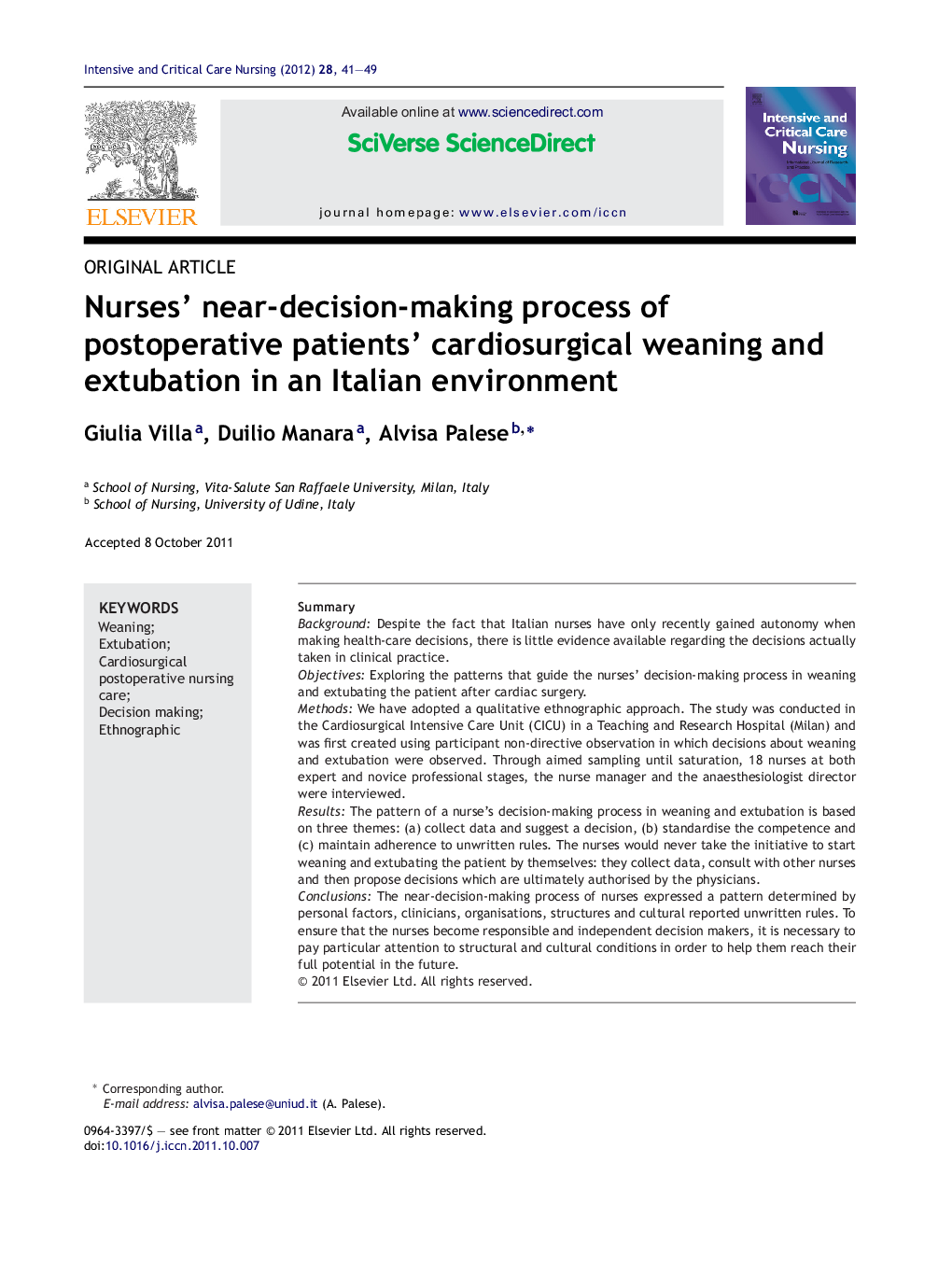| Article ID | Journal | Published Year | Pages | File Type |
|---|---|---|---|---|
| 2652235 | Intensive and Critical Care Nursing | 2012 | 9 Pages |
SummaryBackgroundDespite the fact that Italian nurses have only recently gained autonomy when making health-care decisions, there is little evidence available regarding the decisions actually taken in clinical practice.ObjectivesExploring the patterns that guide the nurses’ decision-making process in weaning and extubating the patient after cardiac surgery.MethodsWe have adopted a qualitative ethnographic approach. The study was conducted in the Cardiosurgical Intensive Care Unit (CICU) in a Teaching and Research Hospital (Milan) and was first created using participant non-directive observation in which decisions about weaning and extubation were observed. Through aimed sampling until saturation, 18 nurses at both expert and novice professional stages, the nurse manager and the anaesthesiologist director were interviewed.ResultsThe pattern of a nurse's decision-making process in weaning and extubation is based on three themes: (a) collect data and suggest a decision, (b) standardise the competence and (c) maintain adherence to unwritten rules. The nurses would never take the initiative to start weaning and extubating the patient by themselves: they collect data, consult with other nurses and then propose decisions which are ultimately authorised by the physicians.ConclusionsThe near-decision-making process of nurses expressed a pattern determined by personal factors, clinicians, organisations, structures and cultural reported unwritten rules. To ensure that the nurses become responsible and independent decision makers, it is necessary to pay particular attention to structural and cultural conditions in order to help them reach their full potential in the future.
